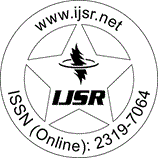Downloads: 1
India | Robotics Science | Volume 13 Issue 1, January 2024 | Pages: 342 - 348
Training and Testing a CNN-based Engine for Brain MRI Scan Classification and Segmentation
Abstract: Biomedical imaging data (from X-rays, CT scans, MRIs) is a rich and crucial source of information for diagnosing and treating patients, yet it is often the most complex to interpret. The large volume of visual data generated can be challenging even for the most experienced clinical professionals to handle and use for diagnosis with high accuracy. With the traditional diagnosis approaches, patients usually face high costs too. Sometimes, abnormalities remain unspotted, causing delays in intervention which can be the difference between saving and losing patient lives. Most traditional radiomics studies use hand-crafted feature extraction techniques, such as texture analysis, followed by conventional machine learning classifiers, such as random forests and support vector machines (SVMs). In this paper, we further establish that X-ray, MRI or CT-image classification using convolutional neural networks (CNNs) could be an efficient, cost-effective and fast approach for diagnosis and interpretation. The research is focused on training a CNN algorithm to develop diagnostic analysis power using 250 brain MRI images and then testing the accuracy and predictive power of the developed CNN algorithm on 5 images. We have shown the superiority of CNN models in image classification when compared to traditional ML Classifiers by performing an extensive ablation study. We have then compared a selected set of existing models with the new model we have built based on the EfficientNet v2-S architecture ? this has helped estimate the relative predictive power and accuracy of these models on their ability to provide various differential diagnoses from the brain MRI scans.
Keywords: Medical Imaging; Brain MRI (magnetic resonance imaging); AI (artificial intelligence); CNN (convolutional neural network) models for medical imaging; Deep Learning; ML classifiers; EfficientNet v2-S architecture
How to Cite?: Kunaal Dhawan, "Training and Testing a CNN-based Engine for Brain MRI Scan Classification and Segmentation", Volume 13 Issue 1, January 2024, International Journal of Science and Research (IJSR), Pages: 342-348, https://www.ijsr.net/getabstract.php?paperid=SR24102111504, DOI: https://dx.doi.org/10.21275/SR24102111504
